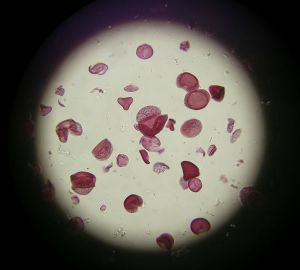QUAVONZ: Quaternary Vegetation of New Zealand
Establishing a database for New Zealand’s vegetation history over the past 50,000 years

New Zealand’s vegetation communities have undergone significant changes in composition and distribution during the past 50,000 years. These changes have culminated in the widespread loss of forests and expansion of grasslands following human settlement. The history of vegetation change and fire is recorded by pollen grains, seeds, ancient DNA and charcoal preserved in swamps, lakes and bogs. Hundreds of these palaeovegetation records exist from across New Zealand, but are often difficult to locate in the scientific literature, or exist only as unpublished files, in ageing file formats, or on storage media that are fast becoming obsolete. Collation and preservation of these data are therefore of high necessity.
In order to address these issues, we are developing a databank and associated online interface for the collation and visualisation of data relating to the vegetation of New Zealand during the Quaternary (with a main focus on the past 20,000 years) (QUAVONZ: Quaternary Vegetation of New Zealand). The databank will allow contributors to log on, upload files and metadata, manage their datasets, and set security levels. This will ensure the data are protected for the future and available for easy access. The public online interface will use unrestricted data from the databank, and allow users to query records for particular locations, plant taxa or time periods of interest. A key use will be informing landowners of appropriate plants for native vegetation planning for restoration. Users will also be able to create customised diagrams, maps and animations, and if further details are required (e.g. for research purposes or publication) to apply to contributors for access and permission to use raw datasets.
Currently we have a PhD student Jacqui Vanderhoon (started in 2022) helping with this project, and her research questions from the pollen data are focussed on better understanding pollen representation and identifying missing taxa from the pollen record and how we can account for these and improve our understanding of long term pollen records from New Zealand.
Key contact
 Janet Wilmshurst
Janet Wilmshurst
Key collaborators
Nick Spencer and Margaret Watts (Landcare Research) Jacqui Vanderhoorn (PhD student)
Funders
Manaaki Whenua-Landcare Research SSIF Terrestrial and Freshwater Biodiversity Information Systems (TFBIS) fund

